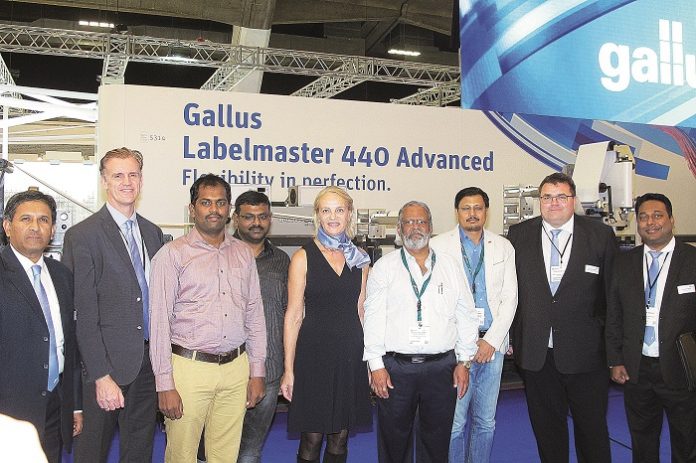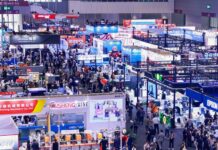
The Indian packaging and label industry has been struggling with flattening GDP growth, demonetization and the new GST tax regime over the past two years. While GDP growth seems to have slowed down to below 5.9% in the current financial year, the industry seems to require a minimum of 6% annual growth to be buoyant and for the label segment to live up to its trajectory as the fastest growing niche in the Indian packaging industry.
 Labelexpo in Brussels in end-September seemed to suggest an uptick in new capex investments by Indian converters in comparison to the previous year. Nevertheless, while the press sales announced around the event inch up toward the 20 mark, the overall numbers for the financial year to end-March may not actually be much higher than the previous anemic year. Even though the GDP growth rate seems attractive to global investors and suppliers, they as well as the Indian converters understand the challenges in realizing the ever-looming potential of our market. Every new manufacturer one met at the show had plans to visit our market in the next few weeks to finalize a deal or an arrangement. However, at the same time they seemed realistic about some of the day-to-day difficulties in doing business here.
Labelexpo in Brussels in end-September seemed to suggest an uptick in new capex investments by Indian converters in comparison to the previous year. Nevertheless, while the press sales announced around the event inch up toward the 20 mark, the overall numbers for the financial year to end-March may not actually be much higher than the previous anemic year. Even though the GDP growth rate seems attractive to global investors and suppliers, they as well as the Indian converters understand the challenges in realizing the ever-looming potential of our market. Every new manufacturer one met at the show had plans to visit our market in the next few weeks to finalize a deal or an arrangement. However, at the same time they seemed realistic about some of the day-to-day difficulties in doing business here.
Ad hoc estimates indicate fewer Indian visitors at this year’s Labelexpo than the previous event two years ago, and certainly some of the leading converters did not attend. The show itself was bigger and more spread out with numerous new suppliers of label stock, inks and chemicals, and presses—flexo, offset, hybrid and digital. In fact, the realm of labels seemed to be spreading to contiguous areas with more technologies at the show talking about in-mold labels, wrap-around and shrink labels and the perennial idea of using label presses for cartons.
At the show, there was also a noticeable increase of digital presses of all sizes and especially those of compact and smaller sizes. Last time at Brussels, one saw prototypes and technology demonstrations and this time all the major press manufacturers had at least one proven digital solution and a few had several proven options. Also more visible than at earlier shows were a host of new prepress imaging and processing solutions for flexo plates and rotary screens. Workflow, MIS and color management solutions too made a stronger appearance than at previous shows.
The dozen or so Indian exhibitors were more self-assured and in tune with the need to demonstrate innovations. Not only were they more established than at the last Labelexpo in Brussels but there was a noticeable improvement in their brand equity and quality of traffic at their stands. One met converters from around the world expecting to find workable and competitive solutions made in India.
A spate of press signings by Indian and Sri Lankan converters
Several press order signings were being talked about at the show—some with more certainty of realization than others. An informal back of the envelope survey suggests that about 18 narrow web flexo label presses were signed for by Indian converters either at the show or in sufficient proximity to be claimed as show sales (although some of the claims are really quite a bit earlier than the show). While most of the actual orders were negotiated beforehand and preplanned for signing and announcements at the show, it is not clear that the actual installations in the financial year till 31 March 2018 will actually wind up much higher than in the previous financial year.
Among the announcements are those of Gallus selling its first Labelmaster press to an Indian customer: ITW-Signode Wintek. Not much has been revealed except that the press is a 430 mm wide Labelmaster Advanced model demonstrated in Brussels in end September and that it will be installed at Wintek’s Bengaluru plant. Other announcements include the sale of multiple numbers of Mark Andy Performance Series P5 including a sale to a Sri Lankan customer, Lombardy Synchroline and Nilpeter presses. Omet too announced the sale of an IFlex 370 press as a Labelexpo signing.
Multitec Aids, the Indian narrow web flexo press manufacturer, also announced the export sales of two S2 direct servo drive presses launched at the show. Each S2 print unit has a pair of servo drives and uses metal sleeve printing cylinders. The two sales announced at the show were negotiated beforehand.
Prepress software and imaging hardware
There were significant signings of prepress equipment at the show, including the information that Pinmark of Ahmedabad has signed up for a Hell direct laser digital imager for flexographic plates. The signing of a Kodak Flexcel NX Wide 5080 flexo platesetter by Shilp Gravures was announced at the show and we also came to know of a large format Esko CDI Cyrstal 5080 imager being purchased by Bengaluru-based Veepee Graphics for its upcoming Pune plant. There was much more digital imaging and processing equipment at the show than ever before with DuPont, Esko, Kodak, Flint-Xeikon, Lead Laser, Amsky and Heidelberg talking about and showing new imagers as well as new processing equipment.











